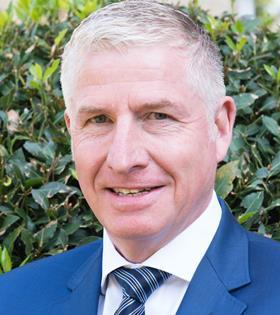Four insurance specialists give their views on making the most of business with schemes

John Price, chief operations officer, SchemeServe
“It’s all about finding a niche and not competing in an already saturated marketplace where it becomes a race to the bottom.
“Brokers don’t have to play that game. Instead you can come up with some niche, very specific products that may reduce the number of customers you attract, but each customer pays you a higher premium. Brokers also need to embrace technology to really make the most of the schemes opportunity.
“How about home insurance for people who live in a cul-de-sac? Or maybe it’s not building insurance, it becomes church insurance or scout hut insurance? Instead of car insurance, you could design a simple slick online schemes product for classic cars instead.
“Those are the sort of things that make your marketing a lot easier. If you can define your product and there’s only you in that category, that’s going to serve you well in the scheme space.
“All of these niche products will have unique needs and exposures that you can tailor the product to. With church insurance, for example, there is going to be a higher propensity for the lead being stolen off the roof, and you will need more cover for roof damage than would be the case for a normal building policy.
“But it’s also not going to have all the requirements for the most complicated and modern locks, because the doors aren’t fitted with them. And there’s fewer combustible contents inside.
“Cycle insurance is usually included in household policies, but people that do triathlons have completely different needs on their cycles. They’re going to leave them unattended in an empty field, possibly for hours. The bikes are probably worth a lot more and nobody is going to lock their bike up because they want fast transition times. So it’s about having a policy that can cope with those very specific needs.
“Your policies can be tweaked and to provide the cover for the right things at that particular variant. It’s about making that niche more specific. After all, the purpose of the insurance product is to protect people and to pay out when certain things happen.
“That is much more likely to attract attention from prospective customers, and usually you can charge increased premiums as a result, and the business is more profitable.”

Pat Brice, distribution director, CFC Underwriting
“The scope and the opportunity to innovate and come up with new schemes is huge. The problem is that people tend to always focus on the same kind of products, through the same channels.
“The critical point really is trying to find something that makes customers interested and want to buy insurance, rather than saying: ‘We’ve invented an insurance product, would you like to buy it? Which is the traditional way the product has been sold.
“Carving out a niche gives you a volume of business and those customers, because it’s in a scheme that, on paper, fits their requirements, will continue to be loyal to that scheme and they’ll continue to renew their business. And, in theory, they’ll tell their peers that are in the same networking group about this scheme and they’ll all buy the product.
“So from a pure volume of business perspective and retention of volume of business that’s very attractive. But where it’s much more attractive from a broker perspective is that you can start to build a brand around the particular sector or a certain type of client that allows you to innovate in other areas.
“In the not-too-distant past you would get people coming and pitching a scheme and saying: ‘I’ve got 5,000 clients in, they’re going to generate £2m of premium, and I’m going to get you all that in year one’.
“And they would never ever deliver that kind of number because the clients didn’t really know what they were buying and they hadn’t got the buy-in from the full client group and/or the product wasn’t necessarily what they wanted to buy.
“In theory an affinity gives you a much stronger hook into the client and an ability to get more of their peers to sign up to it. So if you can work in a neat three-way partnership where you’ve got the affinity group, the broker and the insurer together, you should have a greater chance of success.
“I’m not sure we’d ever get to that scenario where people are truly enthusiastic about buying insurance, but our job is to make it as interesting as possible.
“If you can work with an affinity group or a partner who speaks the language of the client and understands their business and what they’re trying to protect, then it resonates with the client. And that’s far more valuable than any marketing pitch that a broker or an insurer could come up with.”
Ray Johnson, consultant, IIS South East and founder of Insure Green
“There is a market and there will be perhaps be more schemes coming forward, particularly in the commercial space, if they can add value to the sector or facility they’re targeting. Whoever is delivering the scheme, as long as they are involved in the sector and understand the sector, it is feasible to get a good facility together because it does add value and expertise.
“Not all schemes offer the same quality. I’ve seen a couple where it’s clearly not the real thing and it’s a marketing gimmick than actual specialist cover and wordings. I don’t think those kind of schemes will have much longevity compared with an established genuine facility.
“Even where we are placing risks in areas where we don’t have a scheme, we may choose to access another specialist broker’s scheme on behalf of the client. On occasion we prefer to go into the scheme market, even if it means placing the business via another broker.
“By going back to the client and explaining that we have found something sector-specific, we’re adding value.
“For example, if we come across a security company, a church group or a manufacturer, we would access those schemes or facilities in the market that cater to these industries. Not only might that market be restricted, but tapping into the extra cover and enhanced wordings adds value to those schemes. The clients appreciate it and we are well placed as a broker to do that.
“Another important element is to maintain your scheme so that it’s relevant and in line with legislation and change within that sector. Review your scheme at least quarterly.”

Damian Walsh, managing director, TFP Schemes
“In the past there may have been perceptions that scheme facilities were set up on a shoe string, with no financial stability that could leave customers high and dry. As a result, brokers will have had more confidence placing business directly with insurers. So, for schemes to survive and compete they need to ensure they provide a more efficient and faster service than an insurer might be able to in that segment of the market.
“When looking at a new product you need to target a million pound gross written premium (GWP) for any scheme to cover the underlying costs.
“Schemes generally exist in sectors where insurers don’t have experience or expertise, where they don’t have a speciality or where there isn’t sufficient GWP. Most insurers, to consider a segment of the market, need to know there’s adequate premium levels to cover costs and profitability requirements.
“Schemes allow insurers to dabble in those markets without having to worry about the selection process or the expense. Then the consideration from their perspective is whether there is the potential to make a profit. And so critical mass would then not be as big a factor.
“A successful scheme must always add value rather than cost to the distribution chain. There are plenty of schemes in the niche motor market, where we operate, and there will always be opportunity, but you have to do something different. That means either a lower cost base or a different way of selecting and validating customers that would make that business more profitable. If you can take that approach there are definitely opportunities.
“Client validation is vital within our selection process and over the last 10 years within the motor market there’s been a huge shift to client profiling. Insurers do very much understand the benefit of this. It can also be beneficial in the non-motor segments, where validation and understanding the client, as well as the risk, may add more value for brokers, schemes and insurers to identify better run businesses that potentially have fewer claims.
“Identifying fraud is another key factor. While spurious customers may only make up a small percentage of your book, they can have a very significant impact on loss ratio.
“Advancements in technology have made everything so much easier, the knock-on effect is that customers expect to get a quote immediately. As long as you can provide that speed and simplicity, then you have a good chance of running a successful scheme.”






































No comments yet